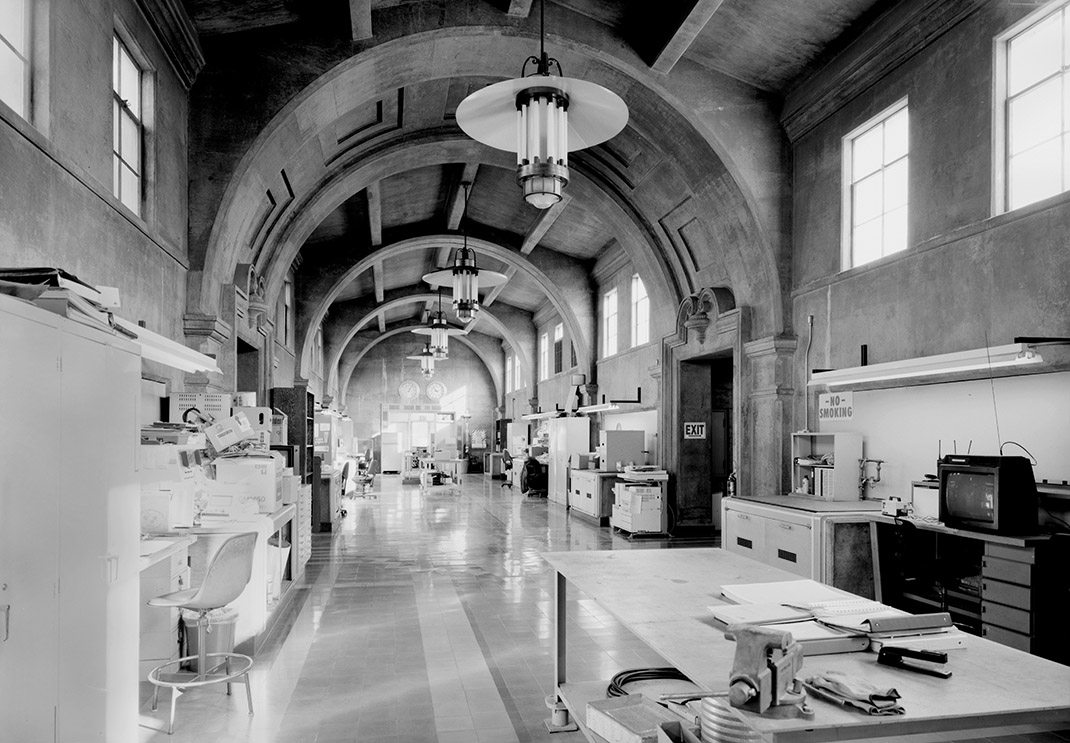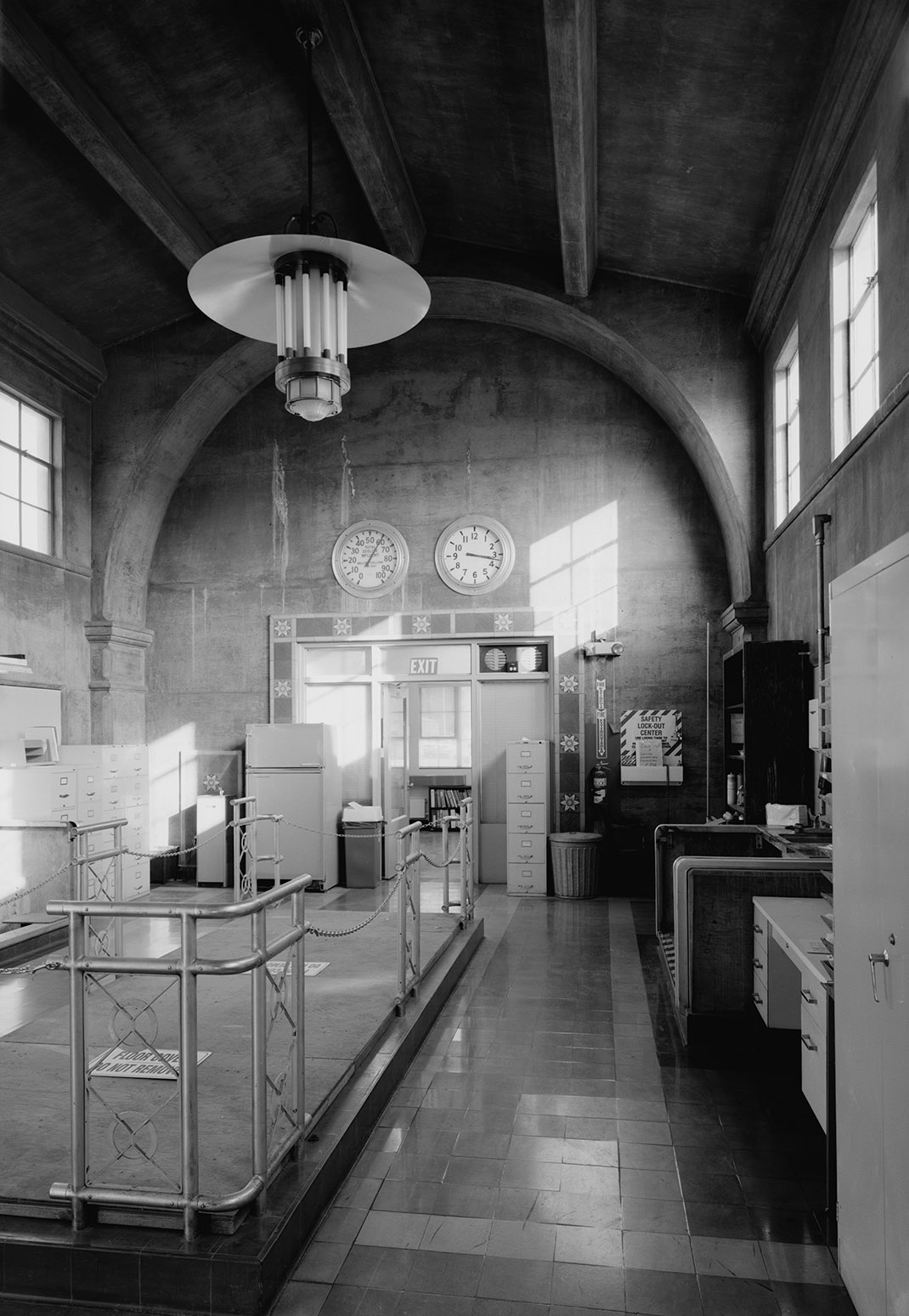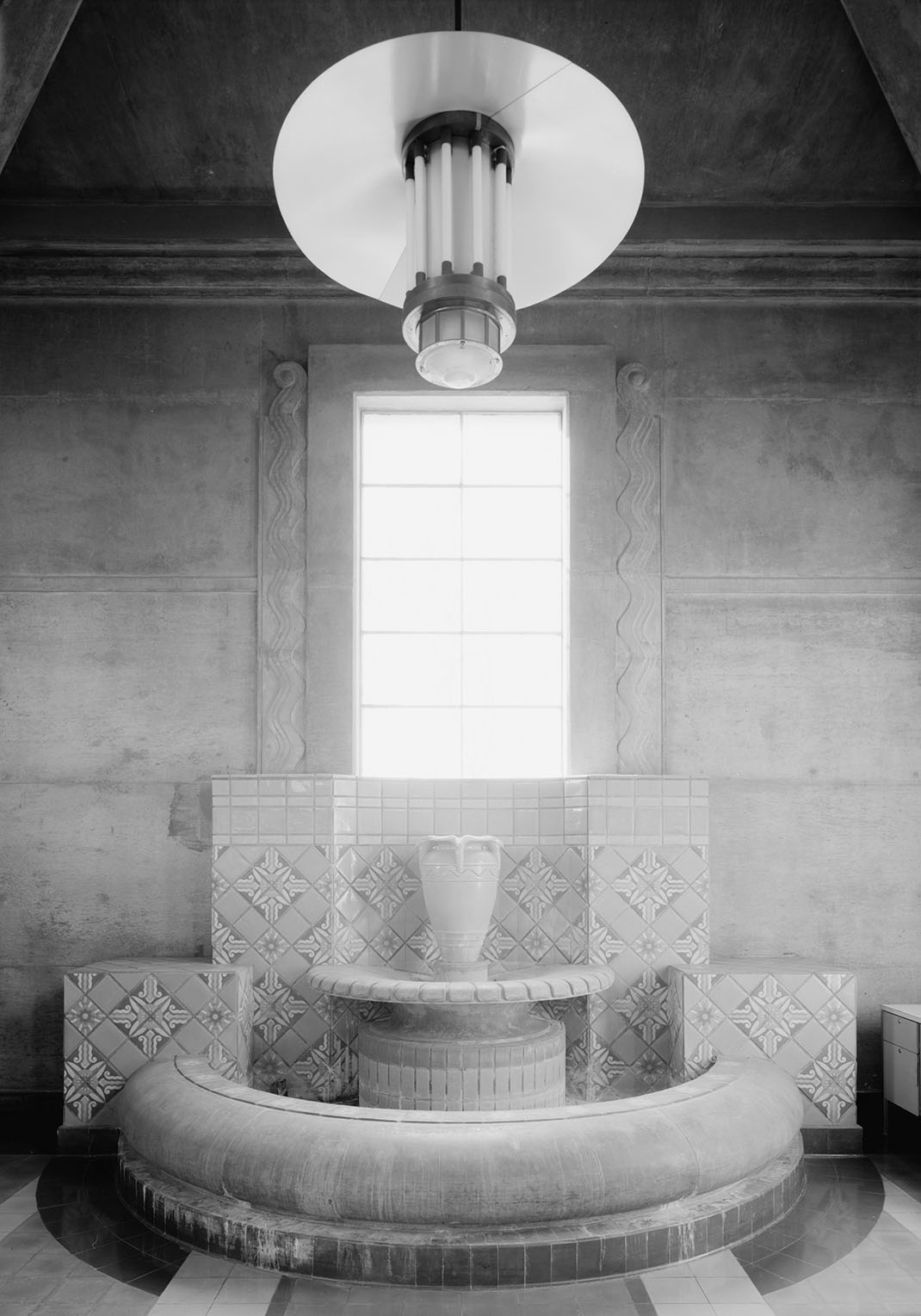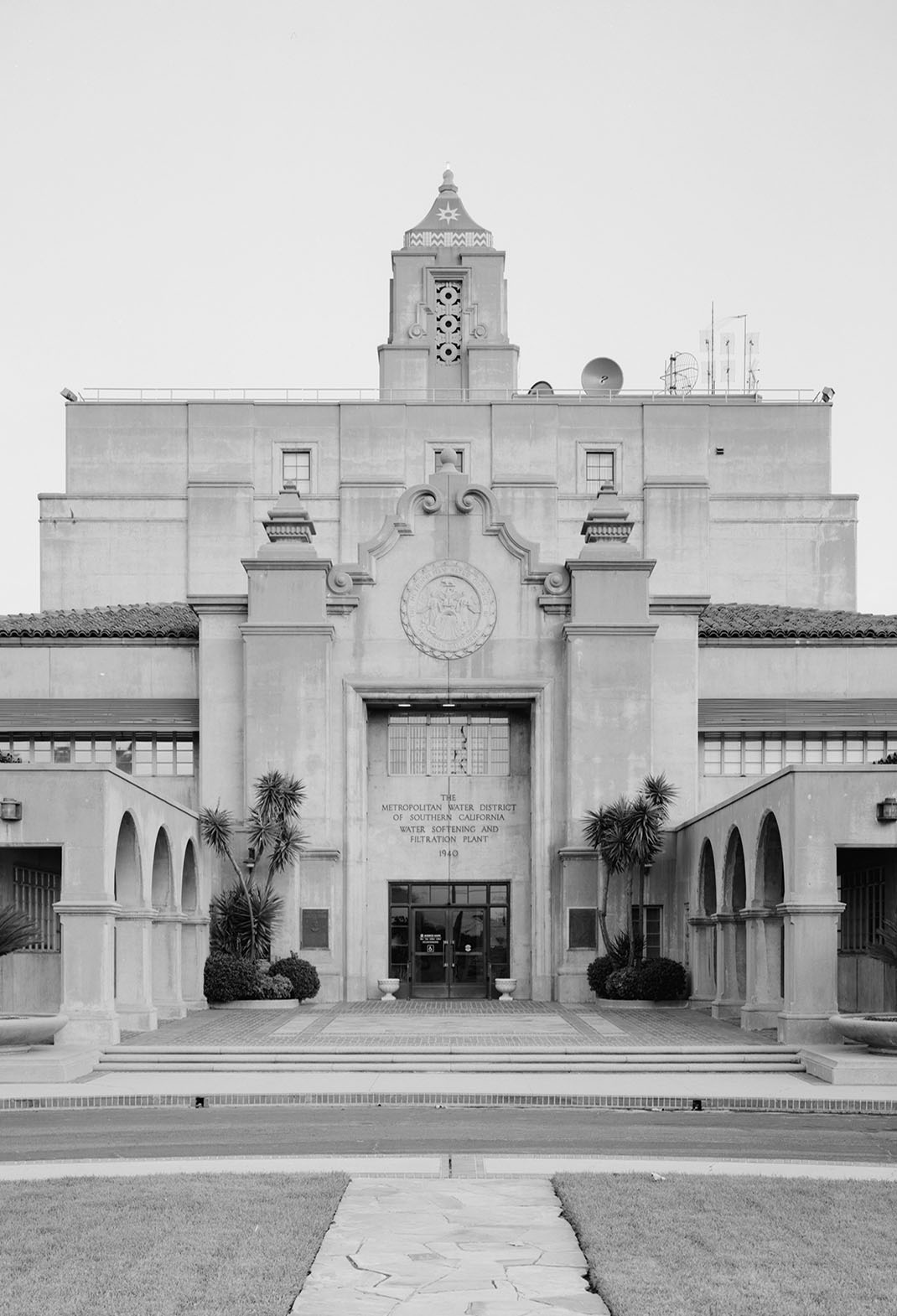 [Image: The Ghent Gate, Bruges, Belgium; via Library of Congress].
[Image: The Ghent Gate, Bruges, Belgium; via Library of Congress].
It’s easy to lose time clicking through the Library of Congress photochrome—or photochrom—collection.
 [Image: St. Croix Gate, Bruges, Belgium; via Library of Congress].
[Image: St. Croix Gate, Bruges, Belgium; via Library of Congress].
Each image has a strangely volumetric beauty, enhanced by subtle depths of shade, that results from a development and printing process that also produced these otherworldly intensities of color.
 [Image: Sevigne Gate, Bordeaux, France; via Library of Congress].
[Image: Sevigne Gate, Bordeaux, France; via Library of Congress].
 [Image: Narrow Streets, Naples, Italy; via Library of Congress].
[Image: Narrow Streets, Naples, Italy; via Library of Congress].
Houses, castles, mountains, rivers, ruins.
 [Image: The valley of Chamonix from the Aiguille du Floria, Chamonix Valley, France; via Library of Congress].
[Image: The valley of Chamonix from the Aiguille du Floria, Chamonix Valley, France; via Library of Congress].
Utterly mundane subjects seem hallucinatory, like stills from an old animated film—
 [Image: Old house in Rue St. Martin, Bayeux, France; via Library of Congress].
[Image: Old house in Rue St. Martin, Bayeux, France; via Library of Congress].
—or even hand-colored illustrations from a fairy tale.
 [Image: The Rabot Gate, Ghent, Belgium; via Library of Congress].
[Image: The Rabot Gate, Ghent, Belgium; via Library of Congress].
Many look like paintings.
 [Image: The cathedral, Carthage, Tunisia; via Library of Congress].
[Image: The cathedral, Carthage, Tunisia; via Library of Congress].
Purely in the interests of weekend eye-candy, I just thought I’d post a bunch here.
 [Image: Sidi-Ben-Ziad, Tunis, Tunisia; via Library of Congress].
[Image: Sidi-Ben-Ziad, Tunis, Tunisia; via Library of Congress].
I could look at these all day—these old streets and roofscapes, honey-colored rocks and even brilliant white robes glowing with sunlight.
 [Image: Tresure Street, Tunis, Tunisia; via Library of Congress].
[Image: Tresure Street, Tunis, Tunisia; via Library of Congress].
 [Image: Mosque of St. Catherine, Tunis, Tunisia; via Library of Congress].
[Image: Mosque of St. Catherine, Tunis, Tunisia; via Library of Congress].
 [Image: Red Sea street, Algiers, Algeria; via Library of Congress].
[Image: Red Sea street, Algiers, Algeria; via Library of Congress].
It’s also interesting to watch as small moments of modernity pop-up in the landscape, like funiculars or—in other images not included here—cable railways, train stations, and steamships.
 [Image: Cable railway, Marseille, France; via Library of Congress].
[Image: Cable railway, Marseille, France; via Library of Congress].
In other cases, it’s just the pure bulk of masonry and its interaction with sunlight that remains so visually compelling, where looking at the city almost meant looking at a geological formation, an artificial mountain chain that you knew was filled with rooms and hallways waiting to be explored.
 [Image: Abbey from the ramparts, Mont St. Michel, France; via Library of Congress].
[Image: Abbey from the ramparts, Mont St. Michel, France; via Library of Congress].
 [Image: New Gate, Grasse, France; via Library of Congress].
[Image: New Gate, Grasse, France; via Library of Congress].
 [Image: Basilica Fourviere, Lyons, France; via Library of Congress].
[Image: Basilica Fourviere, Lyons, France; via Library of Congress].
Finally, these old, looming roof profiles from buildings in Germany are spectacular.
Architects and engineers today should spend more time thinking about roofs, as spaces that can be inhabited, not merely as minimal surfaces used for no other purpose than to cover another space.
Roofs should be labyrinths you can walk through and get lost within. Roofs should have dimension; they should have windows and rooms. They should be spaces in their own right, not just lines where other spaces end.
 [Image: Knockenhauer Amtshaus, Hildesheim, Hanover, Germany; via Library of Congress].
[Image: Knockenhauer Amtshaus, Hildesheim, Hanover, Germany; via Library of Congress].
 [Image: The Sack House, Brunswick (i.e., Braunschweig), Germany; via Library of Congress].
[Image: The Sack House, Brunswick (i.e., Braunschweig), Germany; via Library of Congress].
 [Image: Leibnitz House, Hanover, Germany; via Library of Congress].
[Image: Leibnitz House, Hanover, Germany; via Library of Congress].
 [Image: Das Rattenfangerhaus, Hameln, Hanover, Germany; via Library of Congress].
[Image: Das Rattenfangerhaus, Hameln, Hanover, Germany; via Library of Congress].
 [Image: Brusttuch, Goslar, Hartz, Germany; via Library of Congress].
[Image: Brusttuch, Goslar, Hartz, Germany; via Library of Congress].
 [Image: Holstengate, Lübeck, Germany; via Library of Congress].
[Image: Holstengate, Lübeck, Germany; via Library of Congress].
In any case, last but not least, here are some still-standing “bridge houses” in Bad Kreuznach, Germany.
 [Image: Bridge houses, Kreuznach (i.e., Bad Kreuznach), Nahethal, Rhenish Prussia, Germany; via Library of Congress].
[Image: Bridge houses, Kreuznach (i.e., Bad Kreuznach), Nahethal, Rhenish Prussia, Germany; via Library of Congress].
See many, many, many more photochrom prints over at the Library of Congress.
 [Image: The “so-called Tower of Babel,” photographed in 1932; courtesy Library of Congress.]
[Image: The “so-called Tower of Babel,” photographed in 1932; courtesy Library of Congress.]
 [Images: “Possibly the Tower of Babel” photographed in 1932; courtesy Library of Congress.]
[Images: “Possibly the Tower of Babel” photographed in 1932; courtesy Library of Congress.] [Image: The “so-called Tower of Babel,” photographed in 1932; courtesy Library of Congress.]
[Image: The “so-called Tower of Babel,” photographed in 1932; courtesy Library of Congress.] [Image: “Possibly the Tower of Babel,” photographed in 1932; courtesy Library of Congress.]
[Image: “Possibly the Tower of Babel,” photographed in 1932; courtesy Library of Congress.] [Image: “The Tower of Babel” (1595) by Abel Grimmer, via Wikimedia Commons.]
[Image: “The Tower of Babel” (1595) by Abel Grimmer, via Wikimedia Commons.] [Image: “The Tower of Babel” (1563) by Pieter Bruegel the Elder, via Fine Art America.]
[Image: “The Tower of Babel” (1563) by Pieter Bruegel the Elder, via Fine Art America.] [Image: “Chart showing the original boundary milestones of the District of Columbia,” U.S.
[Image: “Chart showing the original boundary milestones of the District of Columbia,” U.S.  [Image: “District of Columbia boundary stone,”
[Image: “District of Columbia boundary stone,”  [Image: Mapping the stones, via
[Image: Mapping the stones, via  [Image: The Ghent Gate, Bruges, Belgium; via
[Image: The Ghent Gate, Bruges, Belgium; via  [Image: St. Croix Gate, Bruges, Belgium; via
[Image: St. Croix Gate, Bruges, Belgium; via  [Image: Sevigne Gate, Bordeaux, France; via
[Image: Sevigne Gate, Bordeaux, France; via  [Image: Narrow Streets, Naples, Italy; via
[Image: Narrow Streets, Naples, Italy; via  [Image: The valley of Chamonix from the Aiguille du Floria, Chamonix Valley, France; via
[Image: The valley of Chamonix from the Aiguille du Floria, Chamonix Valley, France; via  [Image: Old house in Rue St. Martin, Bayeux, France; via
[Image: Old house in Rue St. Martin, Bayeux, France; via  [Image: The Rabot Gate, Ghent, Belgium; via
[Image: The Rabot Gate, Ghent, Belgium; via  [Image: The cathedral, Carthage, Tunisia; via
[Image: The cathedral, Carthage, Tunisia; via  [Image: Sidi-Ben-Ziad, Tunis, Tunisia; via
[Image: Sidi-Ben-Ziad, Tunis, Tunisia; via  [Image: Tresure Street, Tunis, Tunisia; via
[Image: Tresure Street, Tunis, Tunisia; via  [Image: Mosque of St. Catherine, Tunis, Tunisia; via
[Image: Mosque of St. Catherine, Tunis, Tunisia; via  [Image: Red Sea street, Algiers, Algeria; via
[Image: Red Sea street, Algiers, Algeria; via  [Image: Cable railway, Marseille, France; via
[Image: Cable railway, Marseille, France; via  [Image: Abbey from the ramparts, Mont St. Michel, France; via
[Image: Abbey from the ramparts, Mont St. Michel, France; via  [Image: New Gate, Grasse, France; via
[Image: New Gate, Grasse, France; via  [Image: Basilica Fourviere, Lyons, France; via
[Image: Basilica Fourviere, Lyons, France; via  [Image: Knockenhauer Amtshaus, Hildesheim, Hanover, Germany; via
[Image: Knockenhauer Amtshaus, Hildesheim, Hanover, Germany; via  [Image: The Sack House, Brunswick (i.e., Braunschweig), Germany; via
[Image: The Sack House, Brunswick (i.e., Braunschweig), Germany; via  [Image: Leibnitz House, Hanover, Germany; via
[Image: Leibnitz House, Hanover, Germany; via  [Image: Das Rattenfangerhaus, Hameln, Hanover, Germany; via
[Image: Das Rattenfangerhaus, Hameln, Hanover, Germany; via  [Image: Brusttuch, Goslar, Hartz, Germany; via
[Image: Brusttuch, Goslar, Hartz, Germany; via  [Image: Holstengate, Lübeck, Germany; via
[Image: Holstengate, Lübeck, Germany; via  [Image: Bridge houses, Kreuznach (i.e., Bad Kreuznach), Nahethal, Rhenish Prussia, Germany; via
[Image: Bridge houses, Kreuznach (i.e., Bad Kreuznach), Nahethal, Rhenish Prussia, Germany; via 
 [Image: Via the
[Image: Via the  [Image: Via the
[Image: Via the  [Image: Via the
[Image: Via the  [Image: Via the
[Image: Via the  [Image: From the
[Image: From the  [Image: From the
[Image: From the